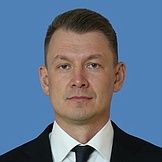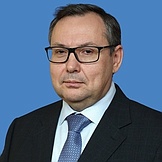Regional flags and emblems


Profile
Established 14 January 1929
State authorities of the Moscow region are located on the territory of the city of Moscow and the Moscow region in accordance with historical traditions
The Moscow Region is part of the Central Federal District
Area 44,300 sq km
Population 8 766 600 (2025)
Ethnic groups
(2020 National Census, %)
Russian – 92,14
Other – 7,86
Administrative divisions (2024)
City districts – 59
Geography and climate
The region is located in the central East European Plain, in the basin of the Volga, Oka, Klyazma and Moskva rivers. The terrain is mostly flat, with the Smolensk and Moscow uplands in the north and west, the Klin-Dmitrov ridge being the highest part (up to 285 m), and the marshy Meshchera lowland in the east.
The Moscow Region borders on the Tula, Kaluga, Smolensk, Tver, Yaroslavl, Vladimir, and Ryazan regions and Moscow.
There are more than 2,000 rivers with a total length of 10,000 km. The navigable Moscow Canal connects the Volga and Moskva rivers. The Mozhaiskoye, Ruzskoye, Istrinskoye, Klyazminskoye, Uchinskoye and other reservoirs were built on the Moscow River and the canal to regulate the runoff. There are over 350 large lakes with the water surface of 8,000 ha; the largest ones are the Trostenskoye, Senezhskoye, Svyatoye, and Velikoye. The main rivers are Oka, Moscow and Klyazma.
The climate is temperate continental. January temperatures average –5.2°C. July temperatures average 19,9°C.
The region is home to the Prioksko-Terrasny Nature Biosphere Reserve, the Zavidovsky Reserve, and Losiny Ostrov National Park.
Government
The legislative branch is represented by the Moscow Regional Duma, which is the permanent, representative and only body of legislative authority in the region.
The Moscow Regional Duma has 50 deputies, with 25 of them running in single-member constituencies and the other 25 in the single electoral district in proportion to the number of votes cast for lists of candidates nominated by electoral associations.
The current Moscow Regional Duma was elected in September 2021. Its term expires in September 2026.
The executive branch of the Moscow Region is represented by the Governor of the Moscow Region, the Government of the Moscow Region – the supreme executive body of the region, the central executive bodies of the Moscow Region – bodies of special competence that carry out executive and administrative functions throughout the region in certain sectors and areas of public management.
The Governor of the Moscow Region is the region’s highest-ranking official who heads the executive branch in the region, as a public authority, and determines the structure of the executive bodies in the Moscow Region. The Governor is elected for five years by Russian citizens who permanently reside in the region.The term of office of the current incumbent expires in September 2028.
The Government of the Moscow Region is the supreme permanent executive authority and a collegial body with general competence.
Economy and natural resources
The Moscow Region is a leader in terms of industrial output in the country. The region’s industry mostly uses imported raw materials and is based on a powerful research and technology infrastructure with highly skilled personnel.
The Moscow Region is a leader in industrial production among Russian regions and home to major industrial centres and science cities.
The Moscow Region produces space and rocket equipment, nuclear and thermal energy equipment, develops solid rocket fuel, etc. The region also makes construction materials, cables, optics, mineral fertilisers and synthetic fibre.
Local facilities operating on a national scale represent the food industry, the chemical industry, metallurgy, the construction materials industry and the wood processing industry. There are companies manufacturing a range of machine-building products, equipment for the energy sector and the consumer industry, space equipment, locomotives, electric trains, metro cars, buses and custom machinery. Other products made in the Moscow Region include acids, mineral fertilisers, synthetic fibre, plastic goods, varnishes and paints, pharmaceutical products, firefighting gear, road marking, etc.
The Kashirskaya Regional Power Station is the largest source of electrical energy in the Moscow Region. Other local power stations include the Shaturskaya Regional Power Station, the Dzerzhinskaya Thermal Power Station, the peak-load Zagorskaya Pumped-Storage Hydroelectricity Station and the Elektrogorskaya Regional Power Station, as well as smaller facilities.
About 40 percent of the Moscow Region territory is engaged in agriculture, both plant and livestock farming.
Local agriculture is primarily peri-urban, with crop production concentrated in the southern areas. A significant part of local cultivated areas is occupied by fodder crops, followed by grain (wheat, barley, oats and rye). Potato farming accounts for a substantial share of local plant-growing. Greenhouse vegetable farming is widespread. There are large greenhouse facilities in the region, also used for horticulture, mushroom growing and other purposes.
Livestock breeding prevails over crop farming and mainly focuses on milk and meat production. In addition to cattle farming, pig and poultry breeding are also well developed.
Culture and tourism
The Moscow Region is one of the centres of Russian Orthodoxy and Russian culture. There are about 6,000 landmarks of cultural heritage of both federal and regional level. Moscow manors, museums, monasteries and churches are part of Russia’s cultural heritage. The Trinity Lavra of St Sergius has been one of the most revered shrines for seven centuries and an important centre of spiritual enlightenment and culture. The town of Istra emerged as a settlement around the grandiose New Jerusalem Monastery of Resurrection, founded in the 17th century by Patriarch Nikon in likeness of the Church of the Holy Sepulchre in Palestine. The monastery is a unique piece of 17th century architecture. The Savvino-Storozhevsky Monastery in Zvenigorod, a major tourist landmark and center of pilgrimage, was founded in 1398 on the Storozh Mountain, on the tall bank of the Moskva River, as a defensive fortification of the Moscow Principality.
Many ancient cities with old kremlins (castles and fortresses) have been well preserved to this day, for example Kolomna, Zaraisk, and Dmitrov. The Kolomna Kremlin, built in 1525–1531, was one of the largest and strongest fortresses at the time. The Zaraisk Kremlin is a history, architecture, art and archaeology museum and the only 16th-century kremlin in the Moscow Region that has been completely preserved.
The main areas of tourism development in the region are cultural and educational, pilgrimage, research, event, health, environmental and agricultural tourism.
Many military historical memorials are concentrated in the Moscow Region; some of them annually host historical festivals and military reenactments, such as the international Borodino Day festival at the State Borodino War and History Museum Reserve in Borodino; Dushonovsky Maneuvers historical festival in the Shchyolkovo District; the Battle of Molody festival in the Chekhov District, and the military patriotic festival and reenactment of the Vokhna River Battles of the 1812 Patriotic War in the Pavlovo-Posad District, and others.


